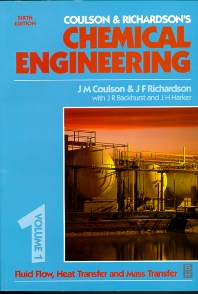Books in Fluid flow transfer processes
Books in Fluid flow transfer processes
- 1st Edition
- November 19, 1999
- Reiji Reiji Mezaki + 2 more
- English
- Hardback9 7 8 0 4 4 4 8 2 8 0 2 6
- eBook9 7 8 0 0 8 0 5 3 1 0 0 7

Engineering Data on Mixing
- 6th Edition
- October 19, 1999
- J R Backhurst + 3 more
- R.P. Chhabra
- English
- Paperback9 7 8 0 7 5 0 6 4 4 4 4 0

Chemical Engineering Volume 1
- 1st Edition
- October 1, 1999
- S.L. Soo
- English
- Hardback9 7 8 0 8 1 5 5 1 4 3 3 6
- eBook9 7 8 0 8 1 5 5 1 8 1 3 6

Instrumentation for Fluid Particle Flow
- 1st Edition
- July 2, 1999
- E.J. Hoffman
- English
- eBook9 7 8 0 0 8 0 5 4 3 4 5 1

Unsteady-state Fluid Flow
- 1st Edition
- Volume 8
- May 7, 1999
- D.A. Siginer + 2 more
- English
- eBook9 7 8 0 0 8 0 5 4 0 5 5 9

Advances in the Flow and Rheology of Non-Newtonian Fluids
- 1st Edition
- Volume 33
- February 18, 1999
- James P. Hartnett + 3 more
- English
- eBook9 7 8 0 0 8 0 5 7 5 8 7 2

Advances in Heat Transfer
- 2nd Edition
- July 14, 1998
- Nicholas P Cheremisinoff
- English
- eBook9 7 8 0 0 8 0 5 1 0 3 6 1

Liquid Filtration
- 1st Edition
- Volume 31
- April 30, 1998
- James P. Hartnett + 3 more
- English
- eBook9 7 8 0 0 8 0 5 7 5 8 5 8

Advances in Heat Transfer
- 1st Edition
- Volume 5
- October 10, 1996
- J.-M. Piau + 1 more
- English
- eBook9 7 8 0 0 8 0 5 4 0 5 6 6

Rheology for Polymer Melt Processing
- 1st Edition
- April 13, 1995
- T.R. Bott
- English
- Hardback9 7 8 0 4 4 4 8 2 1 8 6 7
- eBook9 7 8 0 0 8 0 5 3 1 9 0 8
